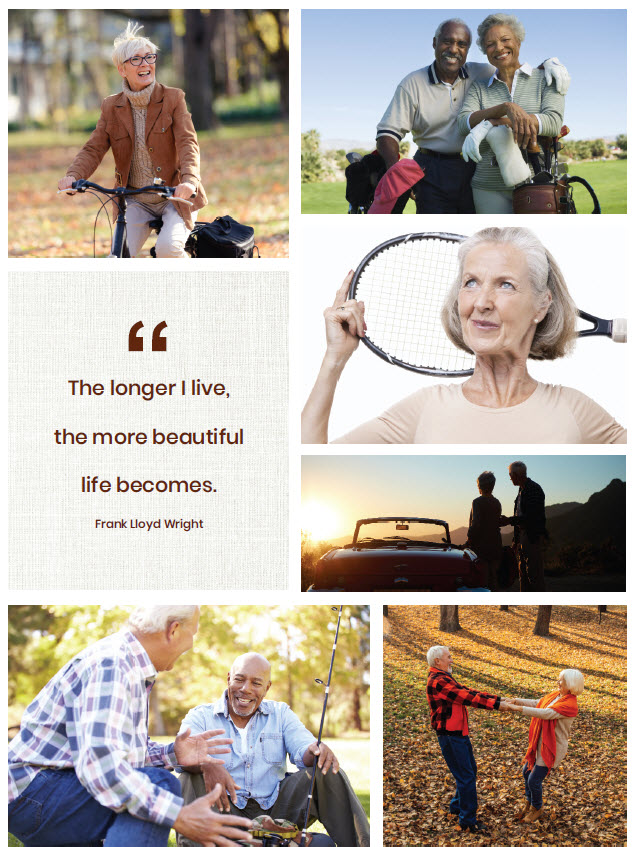The U-Curve of Happiness, Contentment and Fulfilment
For decades, retirement has been associated with slowing down, simplifying life, and quietly embracing the golden years. However, a growing body of research suggests that happiness follows a ‘U-Curve’ throughout life, with contentment and fulfilment reemerging in our later years. This resurgence of happiness is not merely a byproduct of having fewer responsibilities—it stems from the freedom to explore new adventures, pursue passions, and live on our own terms. In this thought leadership piece, Gidon Novick sheds light on this exciting shift, which challenges traditional perspectives on aging and retirement.
According to the 2024 World Happiness Report, South Africa ranks 100th out of 137 countries. While the report highlights happiness trends across different age groups, it also reveals that older adults often report higher levels of life satisfaction than younger individuals, supporting the U-Curve of happiness theory.
As part of the development team at Circle Senior Living, I’ve seen firsthand how this understanding of later life is reshaping the design and ethos of retirement communities. For many, later years are no longer about slowing down but rediscovering freedom, purpose, and joy. This redefinition of retirement reflects a broader cultural shift in how we view aging.
Insights from the Rocktirement Podcast
The Rocktirement podcast, which I (Gidon Novick) recently hosted, featured inspiring guests aged 70 to 80, including notable figures such as Dr. Ali Bacher, Pieter-Dirk Uys, and Ruda Landman. Their stories highlight how this chapter of life is being redefined. Guests shared invaluable lessons about letting go of titles, positions, and possessions and embracing the present moment with renewed purpose.
A recurring theme from these conversations is the conscious effort to rebuild community as family dynamics and friendships evolve. There’s also a profound desire to share wisdom with younger generations. Health and fitness remain a priority for these individuals, but it’s balanced with an unwavering commitment to live fully and enjoy every moment. Their approach to aging serves as a powerful reminder that life’s most meaningful chapters are still ahead.
Understanding the U-Curve
The U-Curve theory suggests that after the pressures of midlife—careers, family responsibilities, and financial concerns—begin to ease, people experience a renewed sense of contentment. With fewer external demands, older adults can focus on personal growth, well-being, and joy.
Interestingly, this resurgence of happiness is not simply a result of fewer responsibilities. It reflects a shift in priorities, with people embracing passions, forging deeper social connections, and engaging in activities that align with personal values. In essence, it’s a phase of life where self-prioritization returns, bringing with it a sense of freedom and fulfilment often missing in earlier decades.
Retirement as a Time for Renewal
As developers, we are increasingly aware of how these shifts in expectations are transforming the landscape of retirement living. Today’s retirees are challenging the traditional idea of retirement as a period of rest and retreat. Instead, they seek environments that support their desire to stay active, socially connected, and intellectually engaged.
At Circle Senior Living, we’ve embraced this shift. Our communities are designed to foster independence, encourage social interaction, and promote well-being. The goal is not merely to provide a comfortable residence but to create a holistic living environment that empowers residents to thrive.
The Role of Environment in Shaping Well-Being
Both research and practice have taught us that the environment plays a critical role in shaping well-being, particularly in later life. While the U-Curve demonstrates that happiness naturally rebounds in our later years, it’s clear that this sense of joy is deeply influenced by the spaces we inhabit.
Environments that encourage social interaction, foster personal growth, and promote active living can profoundly enhance the quality of retirement. For developers and planners, the challenge is to create communities that go beyond meeting basic needs to address the emotional and psychological aspects of aging. Retirement communities must be spaces for growth, engagement, and connection—not merely places to live but places to thrive.
Rewriting the Narrative on Aging
What we’re witnessing is the beginning of a new era of retirement—one that challenges outdated perceptions of aging. The later years are increasingly seen as a time for renewal, growth, and discovery. It’s a chapter of life where people can pursue passions, find purpose, and cultivate joy.
At Circle Senior Living, we are committed to aligning with this new narrative. Retirement is no longer a period to step back but a time to step forward into a new chapter. Our goal is to provide environments that support residents’ pursuit of happiness, fulfilment, and well-being every day. We believe that redefining what it means to age also redefines what it means to live well.




